Attractions · Europe · Going Out · Italy · Leisure Travel · Regions · Speciality Travel · Western Europe
5 of the best art stops in Rome, Italy
Over 2,000 years ago, the Roman poet Ovid spoke of his city as the Urbs Aeterna (The Eternal City), foreseeing an unprecedented urban culture that would indeed survive the ages. Today, Romes nickname is a fitting tribute to almost 3,000 years of art and architecture, ranging from the idealised sculptures of the ancient Romans to Michelangelos awe-inspiring painted ceiling in the Sistine Chapel. Beyond the tourist hotspots of the Colosseum and the Vatican is a cornucopia of visual culture spread to every corner of the Italian capital. Heres our list of the best art stops in Rome:
 Heres our list of the best art stops in Rome:
Galleria Doria Pamphilj
As the former base of ancient Roman religion and the current centre of Catholicism, religion and art inevitably collide throughout the city. Tucked amongst the shops of the bustling Via del Corso is the magnificent 17th century palace of the Doria-Pamphilj family – a family with great influence in Romes religious and political histories. The power and prestige of the Doria-Pamphilj family is still perceptible in the vast collection of masterpiece paintings, sculpture and furniture on display to the public. The collection is exhibited in the magnificent state rooms and galleries of the palace, extravagantly decorated with gilding and frescoed ceilings. This decorative opulence continues into the chapel, with Corinthian columns of coloured marble framing the entrance to the mummified corpse of Saint Theodora. Since its opening to the public in 1950, the palace has been adapted to accommodate some of the oldest pieces of the collection, including the Centauro Furietti Vecchio, a Roman sculpture of a centaur in striking red and black marble. Before heading back into the crowds of the Via del Corso, make sure to take a stroll in the tranquil courtyard of the palace.
Heres our list of the best art stops in Rome:
Galleria Doria Pamphilj
As the former base of ancient Roman religion and the current centre of Catholicism, religion and art inevitably collide throughout the city. Tucked amongst the shops of the bustling Via del Corso is the magnificent 17th century palace of the Doria-Pamphilj family – a family with great influence in Romes religious and political histories. The power and prestige of the Doria-Pamphilj family is still perceptible in the vast collection of masterpiece paintings, sculpture and furniture on display to the public. The collection is exhibited in the magnificent state rooms and galleries of the palace, extravagantly decorated with gilding and frescoed ceilings. This decorative opulence continues into the chapel, with Corinthian columns of coloured marble framing the entrance to the mummified corpse of Saint Theodora. Since its opening to the public in 1950, the palace has been adapted to accommodate some of the oldest pieces of the collection, including the Centauro Furietti Vecchio, a Roman sculpture of a centaur in striking red and black marble. Before heading back into the crowds of the Via del Corso, make sure to take a stroll in the tranquil courtyard of the palace.
 Palazzo Cipolla
A few minutes from the Galleria Doria Pamphilj is the Palazzo Cipolla, the home of exhibitions from the Fondazione Roma Arte-Musei. Whilst the foundation continues the celebration of Italys artistic heritage, the Palazzo Cipolla has shown innovation as host to modern artists from across the world. Past exhibitions have presented the works of Andy Warhol, Georgia OKeeffe and Edward Hopper. This year sees a response to the controversy stirred by 2016s political changes, with an exhibition from British artist Banksy: War, Capitalism & Liberty. The exhibition is an amalgamation of paintings, prints, sculptures and objects from private collections worldwide, and will run from May until September.
Palazzo Cipolla
A few minutes from the Galleria Doria Pamphilj is the Palazzo Cipolla, the home of exhibitions from the Fondazione Roma Arte-Musei. Whilst the foundation continues the celebration of Italys artistic heritage, the Palazzo Cipolla has shown innovation as host to modern artists from across the world. Past exhibitions have presented the works of Andy Warhol, Georgia OKeeffe and Edward Hopper. This year sees a response to the controversy stirred by 2016s political changes, with an exhibition from British artist Banksy: War, Capitalism & Liberty. The exhibition is an amalgamation of paintings, prints, sculptures and objects from private collections worldwide, and will run from May until September.
 Galleria Borghese
The serene, English-inspired gardens of the Villa Borghese are a firm favourite amongst tourists wanting to escape the commotion of the city for an afternoon. Within the buildings of the sprawling gardens is the queen of all private art collections, collected by Cardinal Scipione Borghese around four hundred years ago. As nephew to the Pope, Scipione took advantage of his familial wealth to acquire paintings, sculptures and antiquities by some of the most renowned artists. The Galleria Borghese boasts a permanent collection of paintings by Raphael, Titian and Caravaggio, as well as a floor dedicated to ancient mosaics and sculptures. Until the end of February, the gallery will present The Origins of Still Life: Caravaggio and the Master of Hartford, looking at the development of still life from its idealised Roman origins to the realistic presentations by the Italian painter.
Galleria Borghese
The serene, English-inspired gardens of the Villa Borghese are a firm favourite amongst tourists wanting to escape the commotion of the city for an afternoon. Within the buildings of the sprawling gardens is the queen of all private art collections, collected by Cardinal Scipione Borghese around four hundred years ago. As nephew to the Pope, Scipione took advantage of his familial wealth to acquire paintings, sculptures and antiquities by some of the most renowned artists. The Galleria Borghese boasts a permanent collection of paintings by Raphael, Titian and Caravaggio, as well as a floor dedicated to ancient mosaics and sculptures. Until the end of February, the gallery will present The Origins of Still Life: Caravaggio and the Master of Hartford, looking at the development of still life from its idealised Roman origins to the realistic presentations by the Italian painter.
 Palazzo Altemps
History almost repeats itself in the story of Cardinal Ludovico Ludovisi and his art collection: as the nephew of the Pope Gregory XV, Ludovisi sought out Roman copies of Classical and Hellenistic Greek sculptures, and housed them in the Villa Ludovisi surrounded by its verdant gardens. Unlike the Villa Borghese, however, little of Ludovisis complex survives. Fortunately, at the beginning of the 20th century the Italian state purchased much of the Cardinals collection, and over one hundred sculptures are today on display in the Palazzo Altemps. The 15th century palace commemorates the tradition of collecting amongst Italian nobility, housing works from the collections of various prominent families. The Palazzo Altemps is home to Roman copies of quintessential Greek sculptures, including the infamous Aphrodite of Knidos by the 4th century BC sculptor, Praxiteles – one of the first life-size representations of female nudity.
Palazzo Altemps
History almost repeats itself in the story of Cardinal Ludovico Ludovisi and his art collection: as the nephew of the Pope Gregory XV, Ludovisi sought out Roman copies of Classical and Hellenistic Greek sculptures, and housed them in the Villa Ludovisi surrounded by its verdant gardens. Unlike the Villa Borghese, however, little of Ludovisis complex survives. Fortunately, at the beginning of the 20th century the Italian state purchased much of the Cardinals collection, and over one hundred sculptures are today on display in the Palazzo Altemps. The 15th century palace commemorates the tradition of collecting amongst Italian nobility, housing works from the collections of various prominent families. The Palazzo Altemps is home to Roman copies of quintessential Greek sculptures, including the infamous Aphrodite of Knidos by the 4th century BC sculptor, Praxiteles – one of the first life-size representations of female nudity.
 MACRO
When a break from ancient sculptures and Renaissance paintings is much needed, Museo d’Arte Contemporanea di Roma is the stop for innovative art unbound by the cultural traditions of the city. MACRO is situated in two locations: an old brewery in Salario and a former slaughterhouse in the gentrified area of Testaccio – a far cry from the grand palazzi and villas. The collection consists of 1,200 works of modern and contemporary art, dating from the 1960s to today. Although MACRO diverges from the traditional art of Rome, the museum still respects the practice of spotlighting the artistic talent Italy has to offer. The hectic catalogue of overlapping exhibitions is dominated by Italian artists, though some European and international names have made an appearance in the past, notably South African artist William Kentridge. MACRO is currently host to the first Italian exhibition for British-Indian sculptor, Anish Kapoor, in 10 years, running until mid-April.
MACRO
When a break from ancient sculptures and Renaissance paintings is much needed, Museo d’Arte Contemporanea di Roma is the stop for innovative art unbound by the cultural traditions of the city. MACRO is situated in two locations: an old brewery in Salario and a former slaughterhouse in the gentrified area of Testaccio – a far cry from the grand palazzi and villas. The collection consists of 1,200 works of modern and contemporary art, dating from the 1960s to today. Although MACRO diverges from the traditional art of Rome, the museum still respects the practice of spotlighting the artistic talent Italy has to offer. The hectic catalogue of overlapping exhibitions is dominated by Italian artists, though some European and international names have made an appearance in the past, notably South African artist William Kentridge. MACRO is currently host to the first Italian exhibition for British-Indian sculptor, Anish Kapoor, in 10 years, running until mid-April.
 Pontus Silfverstolpe is Co-Founder of Barnebys.
If you would like to be a guest blogger on A Luxury Travel Blog in order to raise your profile, please contact us.
Pontus Silfverstolpe is Co-Founder of Barnebys.
If you would like to be a guest blogger on A Luxury Travel Blog in order to raise your profile, please contact us.
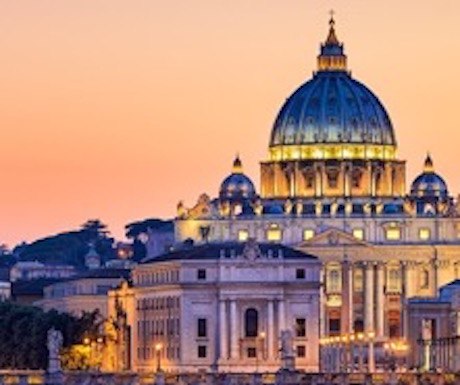 Heres our list of the best art stops in Rome:
Galleria Doria Pamphilj
As the former base of ancient Roman religion and the current centre of Catholicism, religion and art inevitably collide throughout the city. Tucked amongst the shops of the bustling Via del Corso is the magnificent 17th century palace of the Doria-Pamphilj family – a family with great influence in Romes religious and political histories. The power and prestige of the Doria-Pamphilj family is still perceptible in the vast collection of masterpiece paintings, sculpture and furniture on display to the public. The collection is exhibited in the magnificent state rooms and galleries of the palace, extravagantly decorated with gilding and frescoed ceilings. This decorative opulence continues into the chapel, with Corinthian columns of coloured marble framing the entrance to the mummified corpse of Saint Theodora. Since its opening to the public in 1950, the palace has been adapted to accommodate some of the oldest pieces of the collection, including the Centauro Furietti Vecchio, a Roman sculpture of a centaur in striking red and black marble. Before heading back into the crowds of the Via del Corso, make sure to take a stroll in the tranquil courtyard of the palace.
Heres our list of the best art stops in Rome:
Galleria Doria Pamphilj
As the former base of ancient Roman religion and the current centre of Catholicism, religion and art inevitably collide throughout the city. Tucked amongst the shops of the bustling Via del Corso is the magnificent 17th century palace of the Doria-Pamphilj family – a family with great influence in Romes religious and political histories. The power and prestige of the Doria-Pamphilj family is still perceptible in the vast collection of masterpiece paintings, sculpture and furniture on display to the public. The collection is exhibited in the magnificent state rooms and galleries of the palace, extravagantly decorated with gilding and frescoed ceilings. This decorative opulence continues into the chapel, with Corinthian columns of coloured marble framing the entrance to the mummified corpse of Saint Theodora. Since its opening to the public in 1950, the palace has been adapted to accommodate some of the oldest pieces of the collection, including the Centauro Furietti Vecchio, a Roman sculpture of a centaur in striking red and black marble. Before heading back into the crowds of the Via del Corso, make sure to take a stroll in the tranquil courtyard of the palace.
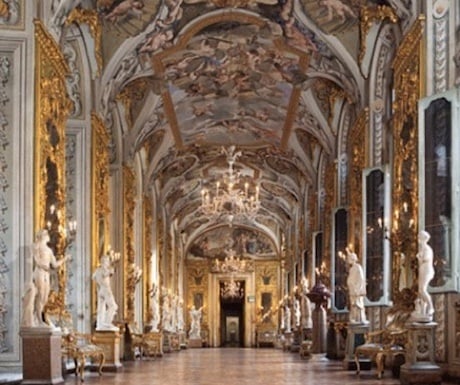 Palazzo Cipolla
A few minutes from the Galleria Doria Pamphilj is the Palazzo Cipolla, the home of exhibitions from the Fondazione Roma Arte-Musei. Whilst the foundation continues the celebration of Italys artistic heritage, the Palazzo Cipolla has shown innovation as host to modern artists from across the world. Past exhibitions have presented the works of Andy Warhol, Georgia OKeeffe and Edward Hopper. This year sees a response to the controversy stirred by 2016s political changes, with an exhibition from British artist Banksy: War, Capitalism & Liberty. The exhibition is an amalgamation of paintings, prints, sculptures and objects from private collections worldwide, and will run from May until September.
Palazzo Cipolla
A few minutes from the Galleria Doria Pamphilj is the Palazzo Cipolla, the home of exhibitions from the Fondazione Roma Arte-Musei. Whilst the foundation continues the celebration of Italys artistic heritage, the Palazzo Cipolla has shown innovation as host to modern artists from across the world. Past exhibitions have presented the works of Andy Warhol, Georgia OKeeffe and Edward Hopper. This year sees a response to the controversy stirred by 2016s political changes, with an exhibition from British artist Banksy: War, Capitalism & Liberty. The exhibition is an amalgamation of paintings, prints, sculptures and objects from private collections worldwide, and will run from May until September.
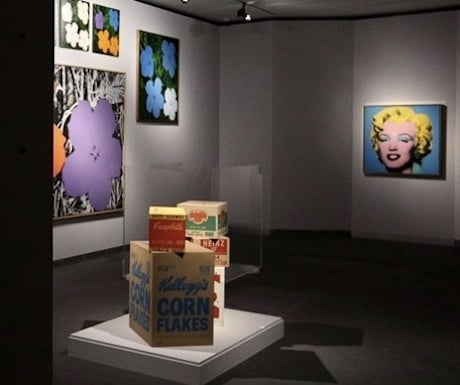 Galleria Borghese
The serene, English-inspired gardens of the Villa Borghese are a firm favourite amongst tourists wanting to escape the commotion of the city for an afternoon. Within the buildings of the sprawling gardens is the queen of all private art collections, collected by Cardinal Scipione Borghese around four hundred years ago. As nephew to the Pope, Scipione took advantage of his familial wealth to acquire paintings, sculptures and antiquities by some of the most renowned artists. The Galleria Borghese boasts a permanent collection of paintings by Raphael, Titian and Caravaggio, as well as a floor dedicated to ancient mosaics and sculptures. Until the end of February, the gallery will present The Origins of Still Life: Caravaggio and the Master of Hartford, looking at the development of still life from its idealised Roman origins to the realistic presentations by the Italian painter.
Galleria Borghese
The serene, English-inspired gardens of the Villa Borghese are a firm favourite amongst tourists wanting to escape the commotion of the city for an afternoon. Within the buildings of the sprawling gardens is the queen of all private art collections, collected by Cardinal Scipione Borghese around four hundred years ago. As nephew to the Pope, Scipione took advantage of his familial wealth to acquire paintings, sculptures and antiquities by some of the most renowned artists. The Galleria Borghese boasts a permanent collection of paintings by Raphael, Titian and Caravaggio, as well as a floor dedicated to ancient mosaics and sculptures. Until the end of February, the gallery will present The Origins of Still Life: Caravaggio and the Master of Hartford, looking at the development of still life from its idealised Roman origins to the realistic presentations by the Italian painter.
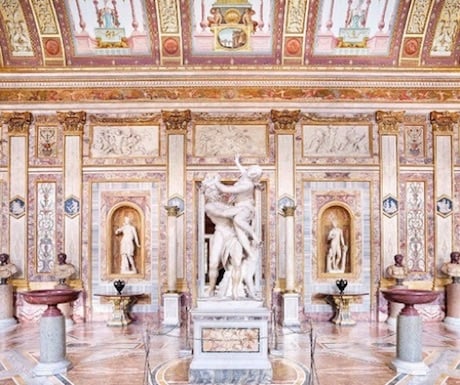 Palazzo Altemps
History almost repeats itself in the story of Cardinal Ludovico Ludovisi and his art collection: as the nephew of the Pope Gregory XV, Ludovisi sought out Roman copies of Classical and Hellenistic Greek sculptures, and housed them in the Villa Ludovisi surrounded by its verdant gardens. Unlike the Villa Borghese, however, little of Ludovisis complex survives. Fortunately, at the beginning of the 20th century the Italian state purchased much of the Cardinals collection, and over one hundred sculptures are today on display in the Palazzo Altemps. The 15th century palace commemorates the tradition of collecting amongst Italian nobility, housing works from the collections of various prominent families. The Palazzo Altemps is home to Roman copies of quintessential Greek sculptures, including the infamous Aphrodite of Knidos by the 4th century BC sculptor, Praxiteles – one of the first life-size representations of female nudity.
Palazzo Altemps
History almost repeats itself in the story of Cardinal Ludovico Ludovisi and his art collection: as the nephew of the Pope Gregory XV, Ludovisi sought out Roman copies of Classical and Hellenistic Greek sculptures, and housed them in the Villa Ludovisi surrounded by its verdant gardens. Unlike the Villa Borghese, however, little of Ludovisis complex survives. Fortunately, at the beginning of the 20th century the Italian state purchased much of the Cardinals collection, and over one hundred sculptures are today on display in the Palazzo Altemps. The 15th century palace commemorates the tradition of collecting amongst Italian nobility, housing works from the collections of various prominent families. The Palazzo Altemps is home to Roman copies of quintessential Greek sculptures, including the infamous Aphrodite of Knidos by the 4th century BC sculptor, Praxiteles – one of the first life-size representations of female nudity.
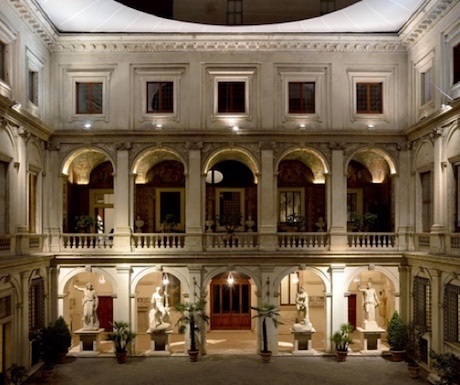 MACRO
When a break from ancient sculptures and Renaissance paintings is much needed, Museo d’Arte Contemporanea di Roma is the stop for innovative art unbound by the cultural traditions of the city. MACRO is situated in two locations: an old brewery in Salario and a former slaughterhouse in the gentrified area of Testaccio – a far cry from the grand palazzi and villas. The collection consists of 1,200 works of modern and contemporary art, dating from the 1960s to today. Although MACRO diverges from the traditional art of Rome, the museum still respects the practice of spotlighting the artistic talent Italy has to offer. The hectic catalogue of overlapping exhibitions is dominated by Italian artists, though some European and international names have made an appearance in the past, notably South African artist William Kentridge. MACRO is currently host to the first Italian exhibition for British-Indian sculptor, Anish Kapoor, in 10 years, running until mid-April.
MACRO
When a break from ancient sculptures and Renaissance paintings is much needed, Museo d’Arte Contemporanea di Roma is the stop for innovative art unbound by the cultural traditions of the city. MACRO is situated in two locations: an old brewery in Salario and a former slaughterhouse in the gentrified area of Testaccio – a far cry from the grand palazzi and villas. The collection consists of 1,200 works of modern and contemporary art, dating from the 1960s to today. Although MACRO diverges from the traditional art of Rome, the museum still respects the practice of spotlighting the artistic talent Italy has to offer. The hectic catalogue of overlapping exhibitions is dominated by Italian artists, though some European and international names have made an appearance in the past, notably South African artist William Kentridge. MACRO is currently host to the first Italian exhibition for British-Indian sculptor, Anish Kapoor, in 10 years, running until mid-April.
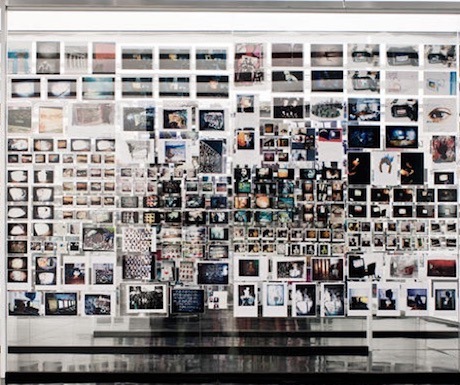 Pontus Silfverstolpe is Co-Founder of Barnebys.
If you would like to be a guest blogger on A Luxury Travel Blog in order to raise your profile, please contact us.
Pontus Silfverstolpe is Co-Founder of Barnebys.
If you would like to be a guest blogger on A Luxury Travel Blog in order to raise your profile, please contact us.Did you enjoy this article?
Receive similar content direct to your inbox.


Thank you Pontus for this amazing post. These are very attractive Art galllery to watch some of the marvelous and historic art of our time. Very enjoyed your writing. Loved it:)
Yes this is an illuminating post. I had no idea that Bansky was at the Palazzo Cipolla this year. Great tip, thanks.